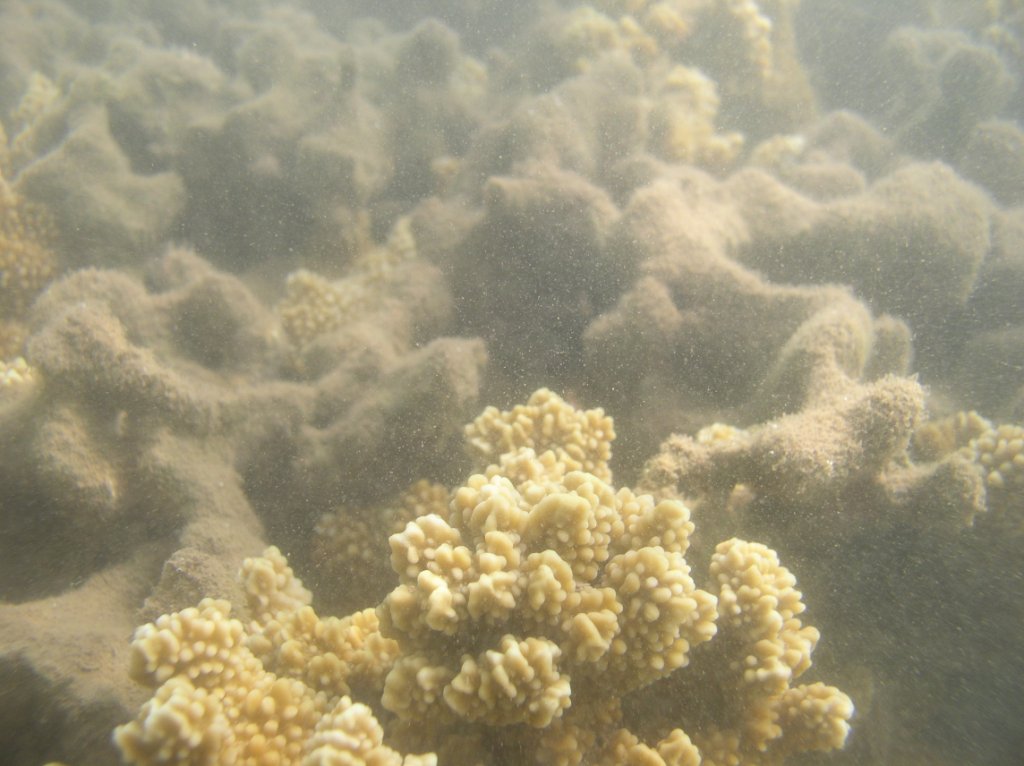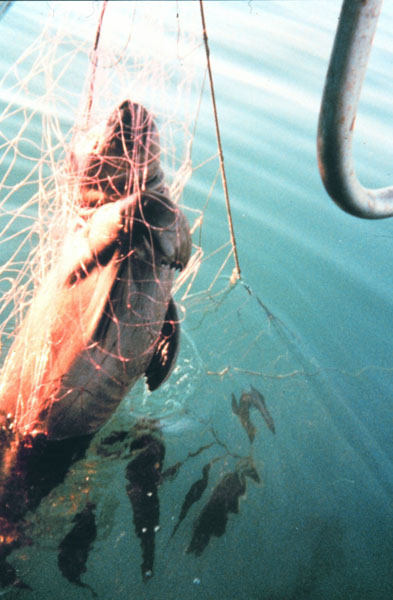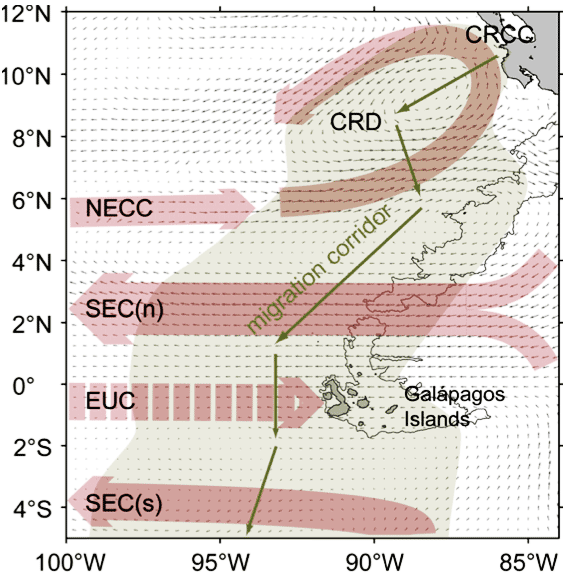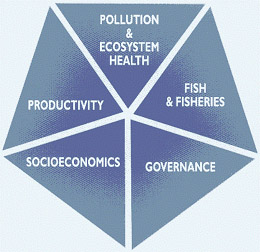1. How Currents Affect Us (3/4)
Conservation and resource management (continued)
Large marine ecosystems of the world
The ocean margins can be divided into large marine ecosystems (LMEs), which are strongly influenced by ocean currents and their interaction with the coast. The health of these ecosystems are affected by human activities, at sea, along the coast, and along the watersheds of the rivers of the region.

Each system is an ecological whole that spans the territorial waters of several nations. Fish stocks regularly cross national borders.
Soil erosion in one country can cover the coral reefs of another with silt brought by rivers and currents (left). Pollution and harmful algal blooms can drift with the currents from one country to the next. Alien species from ballast water emptied near the ports of one nation may threaten the whole ecosystem.

Sustainable management of these ecosystems clearly depends on collaboration across country borders. Recognising this, the UN has set up an international programme to support ecosystem-based management of the coastal and marine resources in the LMEs. The programme supports research to ensure that decisions are made on sound scientific knowledge of each system, while considering the needs of people who live in each region, for example by helping to develop alternatives to activities known to damage the environment.
The LME projects support oceanographic and biological research to improve understanding of the ecosystems, and socio-economic studies of how people interact with the system. They encourage community projects designed to increase understanding of environmental issues and develop sustainable alternatives to activities that damage the environment. They run training courses for scientists and managers to increase research capacity. Finally they encourage and support regional collaboration at political level to develop effective environmental policies. See Links


Protecting endangered turtles
Populations of sea turtles have declined sharply in recent years. The main reasons are habitat destruction and accidental catches of turtles in long-line and gill-net fisheries. Many countries now make an effort to protect nesting beaches from development and human disturbance, but it is more difficult to protect the turtles once they head out to sea. Turtles spread over a wide area, often foraging in areas with commercially important fisheries.

Now a study of turtle migration has revealed a possible solution to the problem of protecting turtles from Costa Rica. The study tracked juvenile turtles hatched on Playa del Grande on their way to tSouth Pacific Gyre, looking at how their movements are affected by ocean currents.
The turtles followed a narrow corridor past the Galapagos Islands and into the South Pacific Gyre where they fanned out. Each year young turtles cross the equatorial currents, choosing a route with low current energy.
The study indicates that it may be possible to protect this turtle population by closing the fishery in a limited area during the turtle migration. Similar studies are taking place elsewhere.
See Links
The Benguela Large Marine Ecosystem Project
One of the earliest LMEs to be set up was the collaboration between South Africa, Namibia and Angola to ensure sustainable management of the Benguela Current Large Marine Ecosystem (BCLME). This upwelling ecosystem is one of the most productive regions in the world. More about the Benguela Current LME

